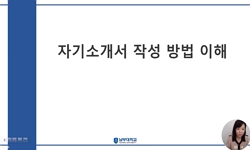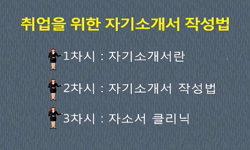A 1:1 correction is different from paper or group correction, in order to maximize the efficiency of correction instruction to match a professor with a student within short period of time. This is to initiate the inquiry technique of correction thr...
http://chineseinput.net/에서 pinyin(병음)방식으로 중국어를 변환할 수 있습니다.
변환된 중국어를 복사하여 사용하시면 됩니다.
- 中文 을 입력하시려면 zhongwen을 입력하시고 space를누르시면됩니다.
- 北京 을 입력하시려면 beijing을 입력하시고 space를 누르시면 됩니다.
https://www.riss.kr/link?id=A99761100
- 저자
- 발행기관
- 학술지명
- 권호사항
-
발행연도
2013
-
작성언어
Korean
-
주제어
발문 ; 일대일(1:1) ; 첨삭 ; 문제해결형 ; 북리뷰 ; 자기소개서 ; Inquiry ; One to One ; Correction ; Problem Solving Type ; Book Review ; Resume
-
등재정보
KCI등재
-
자료형태
학술저널
-
수록면
1-30(30쪽)
-
KCI 피인용횟수
0
- 제공처
- 소장기관
-
0
상세조회 -
0
다운로드
부가정보
다국어 초록 (Multilingual Abstract)
This is to initiate the inquiry technique of correction through questions and suggest the teaching and learning model among proper and effective teaching methodologies. Its purpose is to improve the learner’s writing ability, as has not yet been proposed in a 1:1 correction instruction.
In the correction, the inquiry through questions facilitate teachers and learners’ interaction, easily determines the learner’s factor, can correct and modify content leading by learners, and is able to improve learners’ thinking skills.
This research suggests the procedure of counsel correction and the application plan of inquiry. Firstly, it presents the steps of ‘counsel before correction’ and ‘major correction (checking → summary of the correction result → understanding needs → correcting instruction → final check). On the application plan of inquiry, it develops the inquiry by writing types(problem solving type, book review, resume) and suggests the teaching methodology for effective correction by descriptive inquiry, multiple choice inquiry, and true and false inquiry. Moreover, the problem solving type of writing is exemplified through the specific teaching and learning plan.
A 1:1 correction is different from paper or group correction, in order to maximize the efficiency of correction instruction to match a professor with a student within short period of time.
This is to initiate the inquiry technique of correction through questions and suggest the teaching and learning model among proper and effective teaching methodologies. Its purpose is to improve the learner’s writing ability, as has not yet been proposed in a 1:1 correction instruction.
In the correction, the inquiry through questions facilitate teachers and learners’ interaction, easily determines the learner’s factor, can correct and modify content leading by learners, and is able to improve learners’ thinking skills.
This research suggests the procedure of counsel correction and the application plan of inquiry. Firstly, it presents the steps of ‘counsel before correction’ and ‘major correction (checking → summary of the correction result → understanding needs → correcting instruction → final check). On the application plan of inquiry, it develops the inquiry by writing types(problem solving type, book review, resume) and suggests the teaching methodology for effective correction by descriptive inquiry, multiple choice inquiry, and true and false inquiry. Moreover, the problem solving type of writing is exemplified through the specific teaching and learning plan.
목차 (Table of Contents)
- 1. 서론
- 2. 첨삭과 발문의 의의
- 3. 첨삭의 절차와 발문의 활용 방안
- 4. 발문을 이용한 첨삭 지도 사례
- 5. 결론
- 1. 서론
- 2. 첨삭과 발문의 의의
- 3. 첨삭의 절차와 발문의 활용 방안
- 4. 발문을 이용한 첨삭 지도 사례
- 5. 결론
- 참고문헌
- [Abstract]
참고문헌 (Reference)
1 이창덕, "화법교육론" 역락 2012
2 박상민, "첨삭지도에 대한 학습자 요구분석과 효율적인 첨삭지도 방법" 한국작문학회 (13) : 350-380, 2011
3 지현배, "첨삭의 항목별 효용과 글쓰기 지도 전략" 우리말글학회 48 : 55-84, 2010
4 선주원, "질문하기 전략을 통한 문학 교수학습 과정 연구" 국어교육학회 (18) : 255-288, 2003
5 남경란, "주장이 드러나는 논문의 S 라인" 1-4, 2012
6 최맹철, "자기 질문 생성하기를 활용한 논술 수업 방법 연구" 부산대학교 대학원 2009
7 전숙경, "수업언어로서의 ‘질문’에 대한 이해" 한국교육철학학회 (50) : 165-187, 2010
8 홍경선, "설계기반연구방법을 적용한 학생생성 질문촉진 수업모형 개발 연구" 한국지역발전학회 11 (11): 215-245, 2012
9 유성경, "상담자와 내담자의 언어적 상호작용과 상담의 효율성과의 관계" 한국심리학회 (1) : 79-92, 1998
10 이영주, "발산적 발문 촉진을 위한 교사 연수" 한국교원교육학회 28 (28): 223-240, 2011
1 이창덕, "화법교육론" 역락 2012
2 박상민, "첨삭지도에 대한 학습자 요구분석과 효율적인 첨삭지도 방법" 한국작문학회 (13) : 350-380, 2011
3 지현배, "첨삭의 항목별 효용과 글쓰기 지도 전략" 우리말글학회 48 : 55-84, 2010
4 선주원, "질문하기 전략을 통한 문학 교수학습 과정 연구" 국어교육학회 (18) : 255-288, 2003
5 남경란, "주장이 드러나는 논문의 S 라인" 1-4, 2012
6 최맹철, "자기 질문 생성하기를 활용한 논술 수업 방법 연구" 부산대학교 대학원 2009
7 전숙경, "수업언어로서의 ‘질문’에 대한 이해" 한국교육철학학회 (50) : 165-187, 2010
8 홍경선, "설계기반연구방법을 적용한 학생생성 질문촉진 수업모형 개발 연구" 한국지역발전학회 11 (11): 215-245, 2012
9 유성경, "상담자와 내담자의 언어적 상호작용과 상담의 효율성과의 관계" 한국심리학회 (1) : 79-92, 1998
10 이영주, "발산적 발문 촉진을 위한 교사 연수" 한국교원교육학회 28 (28): 223-240, 2011
11 양미경, "대화식 교과 지도의 원리와 실천 방안" 경남대학교 교육문제연구소 12 (12): 13-31, 2002
12 심영덕, "대학생을 위한 올바른 글쓰기 전략" 한민족어문학회 (51) : 720-, 2007
13 실용국어편찬위원회, "대학생을 위한 글쓰기와 말하기" 대구가톨릭대학교 출판부 2013
14 김남미, "대학 학습자 글쓰기의 첨삭지도 방안" 우리말학회 (30) : 269-296, 2012
15 나은미, "대학 글쓰기에서의 첨삭 프로그램 현황과 개선 방안" 한성어문학회 28 : 187-216, 2009
16 김낙현, "대학 글쓰기 교육의 효과적인 첨삭지도 방법에 대한 고찰" 한국교양교육학회 6 (6): 323-348, 2012
17 양미경, "교사의 질문 특성 및 역할에 대한 비판적 이해" 건국대학교중원인문연구소 20 : 61-79, 1999
동일학술지(권/호) 다른 논문
-
- 한국어문학회
- 유경화(Liu, Qing-hua)
- 2013
- KCI등재
-
- 한국어문학회
- 이정복(Lee, Jeong-bok)
- 2013
- KCI등재
-
- 한국어문학회
- 허재영(Heo, Jae-young)
- 2013
- KCI등재
-
〈도화녀ㆍ비형랑〉 설화에 나타난 두두리(豆豆里)신앙의 지역화와 진지왕계 복권신화적 기능
- 한국어문학회
- 강은해(Kang, Eun-hae)
- 2013
- KCI등재
분석정보
인용정보 인용지수 설명보기
학술지 이력
| 연월일 | 이력구분 | 이력상세 | 등재구분 |
|---|---|---|---|
| 2026 | 평가예정 | 재인증평가 신청대상 (재인증) | |
| 2020-01-01 | 평가 | 등재학술지 유지 (재인증) |  |
| 2017-01-01 | 평가 | 등재학술지 유지 (계속평가) |  |
| 2013-01-01 | 평가 | 등재학술지 유지 (등재유지) |  |
| 2010-01-01 | 평가 | 등재학술지 유지 (등재유지) |  |
| 2008-01-01 | 평가 | 등재학술지 유지 (등재유지) |  |
| 2006-01-01 | 평가 | 등재학술지 유지 (등재유지) |  |
| 2004-01-01 | 평가 | 등재학술지 유지 (등재유지) |  |
| 2001-07-01 | 평가 | 등재학술지 선정 (등재후보2차) |  |
| 1999-01-01 | 평가 | 등재후보학술지 선정 (신규평가) |  |
학술지 인용정보
| 기준연도 | WOS-KCI 통합IF(2년) | KCIF(2년) | KCIF(3년) |
|---|---|---|---|
| 2016 | 0.56 | 0.56 | 0.56 |
| KCIF(4년) | KCIF(5년) | 중심성지수(3년) | 즉시성지수 |
| 0.54 | 0.53 | 0.99 | 0.1 |




 DBpia
DBpia





